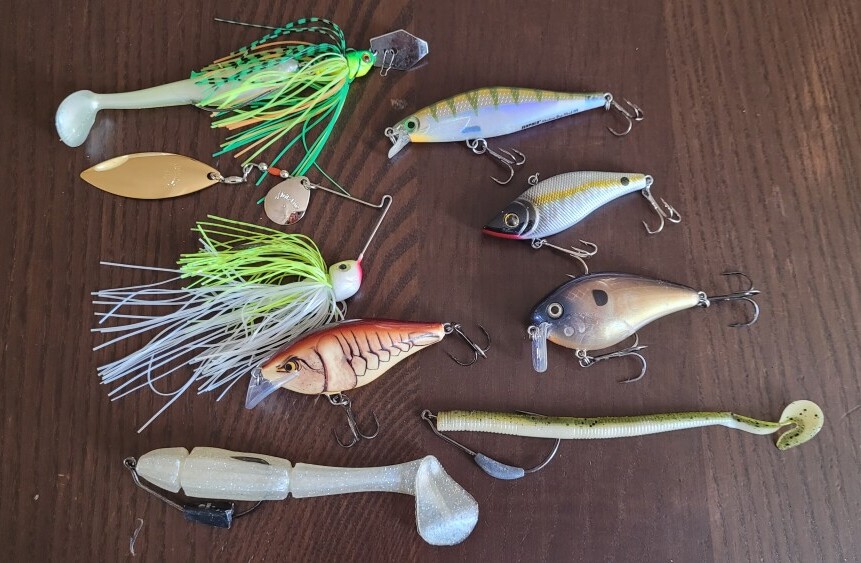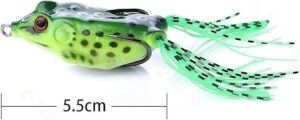Best Early Spring Bass Lures
Early spring offers a unique chance for bass anglers. As water temperatures gently rise, bass begin to emerge from their long winter hideaways, making these early days on the water especially rewarding. In this article, I share my insights on the best early spring bass lures. I discuss the essential gear you’ll need, what bass look for during these cooler conditions, and offer practical tips that can give a boost to your fishing experience. Read on to learn how the right lure strategy can transform a quiet day at the lake into a memorable adventure.

Essential Lures and Gear for Early Spring Bass Fishing
Successful bass fishing in early spring depends on having the right combination of lures and gear. Over many seasons, I have experimented with various options and learned which ones work best when bass are just beginning to stir. Early in the season, bass become extra sensitive to both light and water temperature. Lures that mimic the gentle movements of injured baitfish or emerging insects often spark a feeding response without frightening the fish. A well-stocked tackle box might include crankbaits, soft plastics, and spinnerbaits. Good casting accuracy and a smooth, natural retrieval are key. By choosing lures with subtle, suspended actions, you can entice cautious bass on cooler days while presenting what appears to be an easy meal.
Understanding Bass Behavior in Early Spring
Getting a feel for bass behavior as the season transitions is very important. After a long, cold winter, bass slowly leave their deep, sheltered spots and are not yet in full attack mode. Their metabolism is low, so they become selective about what they nibble. In these conditions, bass look for prey that shows gentle movement rather than rapid, aggressive action. Meanwhile, natural food sources like minnows and crawfish begin to show signs of life in early spring. Because the water can sometimes be a bit murky from runoff and melting ice, lures with eye-catching colors or subtle vibrations are especially effective. By watching the water temperature and light levels and matching your presentation to the natural pace of prey, you can better convince bass to take the bait.
Getting Started with Early Spring Bass Lures
Starting out with early spring bass lures is more straightforward when you have a basic plan. Begin with a mix of hard baits and soft plastics that have proven effective in past seasons. Early on, bass tend to linger near underwater structures such as vegetation, sunken timber, or rock piles, where they await an easy opportunity. Lures that suspend or drop slowly through the water column work very well because they imitate the languid descent of a dying baitfish. Before you cast, take a moment to check the water for any areas that seem a bit warmer or have a light current. These warmer pockets often attract feeding bass. Experiment with varying your retrieval speed and inserting short pauses in your retrieve to simulate injured prey. With patience and a willingness to adjust your technique, you can develop a lure strategy that consistently attracts cautious early spring bass.
Things to Consider Before Choosing Your Early Spring Bass Lures
Choosing the right lure is not just about picking one off the shelf; it requires thoughtful consideration of current conditions. As water temperatures gradually rise, bass remain cautious, so your lure must have enough action to grab their attention without sending them into hiding. For example, when using suspending jerkbaits, the speed of your retrieve combined with brief pauses can replicate the natural movement of small prey. Soft plastic lures, on the other hand, perform best when fished with gentle, teasing motions rather than aggressive jerks. Keep in mind that factors such as water clarity, weather, and even the time of day influence lure performance. Taking a few extra moments to observe the surroundings and noting subtle changes can help you adjust your technique. Maintaining a small notebook to record these observations can be a great way to refine your lure selection over the course of the season.
Advanced Tips and Tricks for Early Spring Bass Fishing
Once you have the basics down, fine-tuning your method can really take your fishing experience up a notch. One advanced tip is to adopt an exceptionally slow retrieve when using suspending lures. This gives the fish ample time to make a move, especially when they are in a low-energy state. Focusing on underwater structure is another key strategy—bass naturally gravitate toward areas with rock piles, dense vegetation, or sunken logs. Matching the lure to the local prey can also boost your chances; if minnows are common in your fishing spot, opt for lures that mirror their appearance in size and color. Regularly checking the water with a thermometer to pinpoint warmer pockets can help you adjust your tactics on the fly. Being open to trying new speeds, colors, and casting angles can lead to sudden breakthroughs when a familiar lure seems less effective. Often, a small tweak in your presentation is all it takes to entice a bite from a cautious bass.
Considerations When Experimenting with New Lures
While new lures can add an exciting twist to your routine, it’s important to consider a few factors before making a switch. Results may vary depending on the body of water and current conditions, so a lure that works well in one situation might not perform in another. Before stocking up on new options, check in with local fishing reports and the experiences of fellow anglers. Testing a new lure in a familiar spot can provide a useful benchmark for its effectiveness. Also, evaluate each lure for its durability and realism in action—qualities that are crucial when water conditions change unexpectedly. A careful, methodical approach will help ensure that any new addition to your tackle box truly boosts your early spring fishing success.
Frequently Asked Questions
Question: What makes early spring bass lures different from those used in summer?
Answer: In cooler water, bass tend to be less aggressive and more selective. Early spring lures feature subtle, suspended actions that mimic injured or struggling prey, appealing to bass that are conserving energy after a long winter.
Question: Which lure colors work best in murky spring water?
Answer: The ideal lure color depends on water clarity. Lures with bright, eye-catching hues often stand out in murky conditions or on overcast days, enabling bass to pick them up more easily.
Question: How should I adjust my technique in colder water?
Answer: In colder water, slower and more deliberate retrieves are key. A gentle, teasing presentation that mimics the natural movement of dying baitfish can encourage a bite even when bass are less active.
Question: What should I do if my usual lures aren’t working?
Answer: It can help to mix things up by adjusting your retrieval speed, switching lure colors, or focusing on different underwater structures. A minor tweak in your approach may trigger a strike from even the most cautious bass.
Wrapping Up
Wrapping up, selecting the best early spring bass lures requires a blend of understanding bass behavior and matching that insight with the right equipment. The process involves careful observation of water conditions and a willingness to experiment with different lure actions, retrieval speeds, and colors. Every fishing outing offers an opportunity to learn and refine your strategy, so keeping a record of what works can be very helpful. With thoughtful planning and a flexible approach, early spring can be an especially fruitful time for bass fishing. I hope these insights help you step up your game and enjoy more successful, memorable days on the water.


